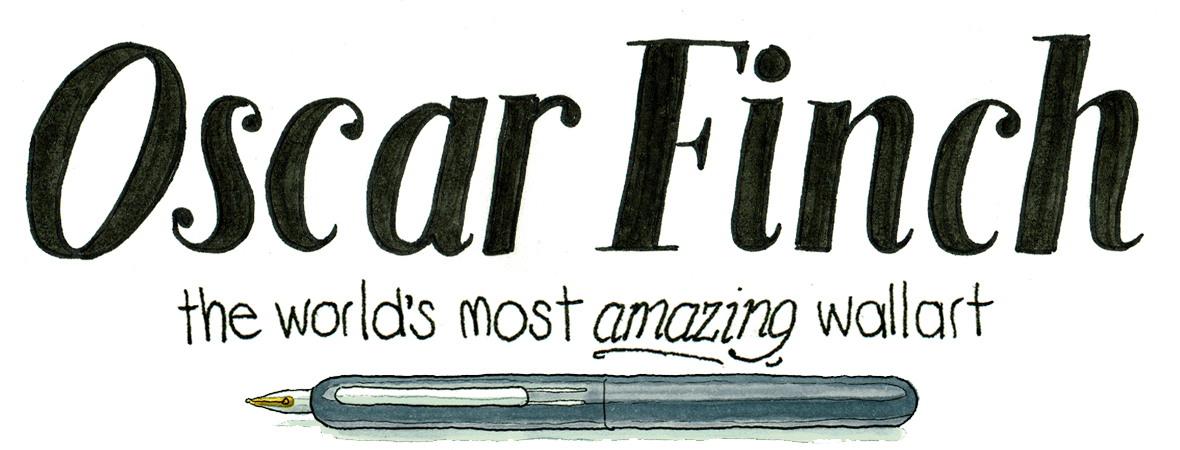How I tried to win the Archibald Prize as a radical rebel (and what I learnt along the way)

85 days ago I started something I didn’t quite understand.
How can I win the Archibald Portrait Prize? That's the question I asked myself and my small band of followers. I’m now tantalisingly close to an answer.
But before I go there, let me start at the beginning.
When I was 19 I entered the Archibald Portrait Prize for the very first time. It was my way of trying to assure the smallish country boy I was that maybe I could do something bigger than my town. Of course Adam Cullen won that year and my work sank without a trace. But it birthed in me hope.
It wasn’t until last year that I returned to the scene of my failure with a sequel which placed in the top 884 works (there were 884 entries). Wood Allen once said '80 percent of life is showing up', and that was my philosophy.
But this year I was determined to do more. To win.
To answer the question ‘How can I win the Archibald Portrait Prize?’ I started with a little history of the Archibald, its ebbs and flows.
The Archibald prize is the most famous art award in the Australian art world, founded in 1921 and given to ‘the best portrait of a man or woman distinguished in art, letters, science or politics in the previous year’. But its ways are mysterious. Like a furious tempest that dances to its own tune, who wins the Archibald prize and how they win seemed like a maze surrounded by a labyrinth within a giant puzzle.
So I tried to make sense of it by examining common traits of the previous Archibald winners - materials, size, subject, colours and style (most commonly a large oil painting of an artist with realist or expressionist style).
But of course there have been rule-breakers that changed history. William Dobell in 1943 won with a famous caricature that broke convention. Brett Whiteley in 1976 shocked with his self-portrait (a reflection in a hand mirror in his studio surrounded by personal objects).
Of course I had to decide which approach to take - conventional wisdom, rebel or radical rebel? My audience decided on radical rebel so I charted what a radically rebellious winner for the Archibald Prize might be and came up with this diagram.
But grabbing the judge’s attention as they sweep past over 800 other hopefuls is the first hurdle to winning. So on two counts I had to stand out and be recognised. The first is to paint someone recognisable to the judges and the second is to use size and shape. Artists are the most common subject of winners (over a third), and a sportsman, banker and journalist the least (only once). In recent years 3.5 metres is the standard surface area of a winner and portrait dimensions are the most popular shape and canvas the most popular surface. This is the context I need to stand out in.
Now, I’m no Old Master which presented a challenge to using oil paints on canvas in a realist style but of course if you want to beat a strongman you can’t do it with strength. Instead you need to outwit him.
So instead I chose to use what made me distinctive, like Picasso did it with cubes, Damien Hirst did it with formaldehyde and a tigershark and Tracey Emin did it with an unmade bed. That is I decided to approach the Archibald Prize as I would my other art - with simple black ink, vibrant colours of the vast unnoticed parts of Sydney and imagination.
This led me to 5 radical ideas each with intriguing strengths and 19 days to create one.
I chose the landscape of George Street in which to put my subject using a giant 3.3 metre tall watercolour paper and here’s why.
It's large - gargantuan actually - (the limit is 3.4 metre high because that’s as tall as the walls of the Art Gallery of NSW). Its proportions are unusual because it's relatively narrow (1.4 metres wide). It tells of the vast expansive city we live in but don't often notice and uses bright colours and blankets of white space. It’s ink, watercolour on paper (which has never won before) and tucked as a small life amongst the dominating scene is artist Peter Drew who has been travelling around Australia to 8 cities with his 'Real Australians Say Welcome' campaign. Here is my full explanation and pictures of my final painting.
In 85 days I’ve learnt a lot.
I learnt that self-doubt is a familiar acquaintance but will visit less when ignored. And while failing is scary, success is almost as scary but doing nothing is the scariest.
I learnt that hidden inside everyone is an artist because almost everyone has suggestions about how I should paint the Archibald Prize differently - a different subject, different medium, different size, different style. Everyone should do it at least once!
I’ve learnt it’s hard involving others in my ideas because it feels like sending my child to a hungry lion pride. But it’s more interesting and rewarding, kind of like watching a movie with someone rather than alone.
Will I win (and change art history)? Maybe. If not, like Thomas Edison did with the light bulb, I’d have learnt one more way not to win the Archibald Prize which puts me one step closer next year.
The complete series 'How to win the Archibald Prize'
Sign up for my newsletter to follow my adventures here (and for your chance to win my original art on a t-shirt or original print)
P.S - If you'd like an original print of my Archibald journey for $20 just go here.




